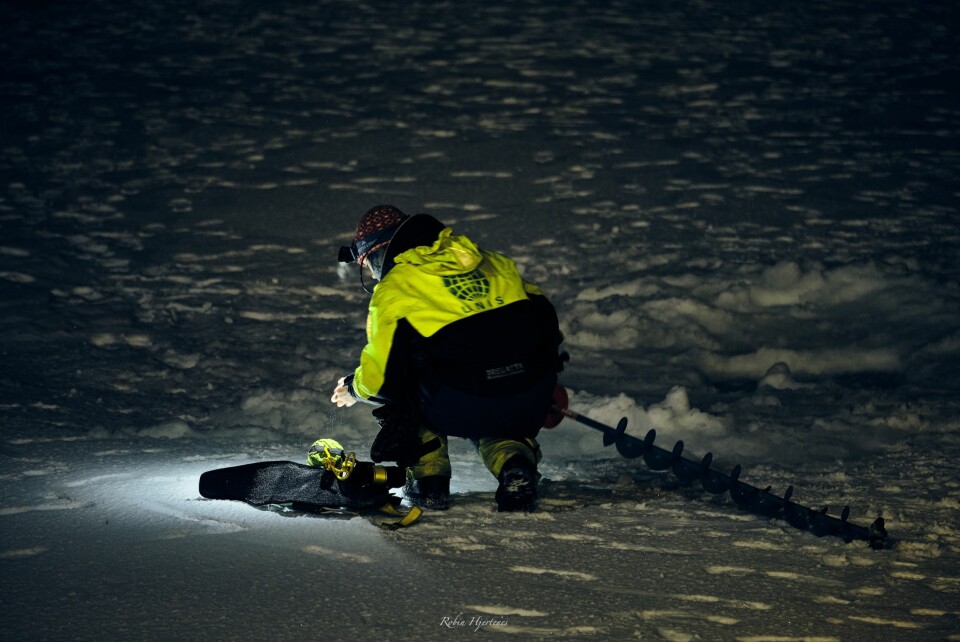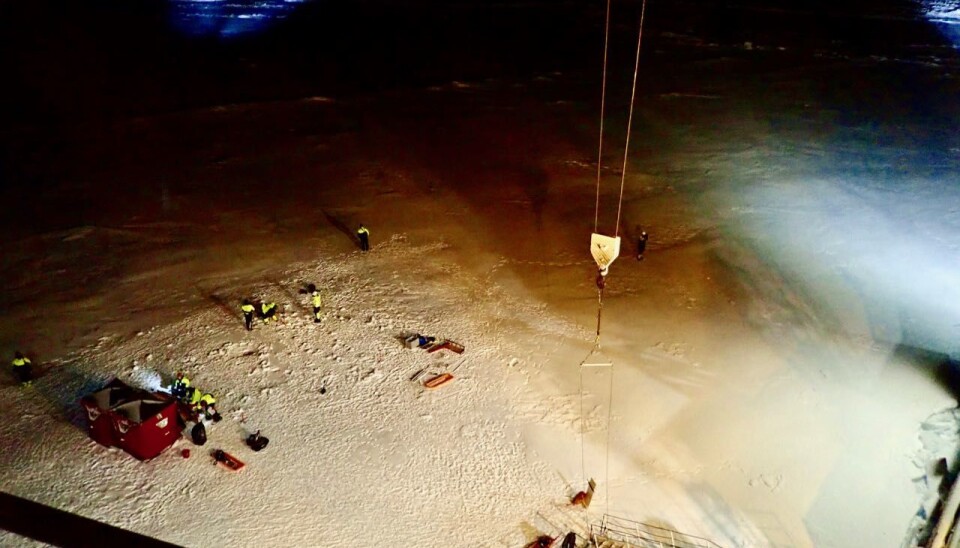
Care for you core!
We have recently drilled 34 ice cores from the sea ice. We expected to find very little life inside the ice, but we were proven wrong.
It´s day 9 on RV Kronprins Haakon and we are on the way to our third station, Northeast of Kvitøya. It is polar night in the Arctic, the sun is not rising at all and the only light we see is the ship lights, and today a bit of the moon.
We were very lucky at our first ice station “P7”. The air temperature dropped from -24 to -10 degrees C and the ship gave us shelter from the strong winds, so it was quite “cosy” to be out on the sea ice, drilling for a total of 34 ice cores in the darkness. However, we struggled a bit with the equipment, the drills kept failing as well as the batteries, and ice cores got stuck in the Kovacs corer, but after about 8 hours we had gotten all 34 sea ice cores and returned back to the mothership.
Back on board, the process I call “care for your core”, started. These 34 ice cores are used for different biological, chemical and physical parameters, and depending on the parameter there are different procedures. I will tell you what happened with the three cores I care for:
These cores were taken to study sympagic fauna and flora. Sympagic means “within the ice” and yes, indeed there are tiny animals and microalgae living within the ice! Sea ice can provide a habitat to the smallest critters (< 1mm) due to the feature when sea water is freezing. Only the water molecules freeze and the salt remains liquid as so-called brine channels/pockets (very salty little pathways within the sea ice) and these little channels provide an extreme habitat for a very unique community.
It's alive!
Back onboard, the core sections (the core were sectioned on the sea ice), get added filtered seawater to keep the critters from osmosis stress when the ice is melting. Then we leave them for 24-48 hours for melting in the dark in a fridge, checking and softly shaking the melting buckets now and then.

When the core pieces are completely melted, a small subsample is taken for ice algae community composition, while the rest of the melted ice water is analysed for sympagic fauna. I assumed to not find much living things in the sea ice at this time of the year, but I was proven wrong: the sea ice was alive! Tiny planktonic crustaceans, crustacean larvae, flatworms and wheel animals (> 20µm) were moving around in my petri dish. The “care for your core” process was indeed successful!







